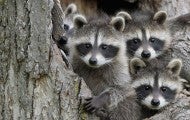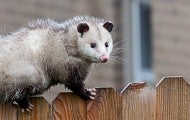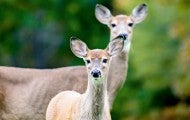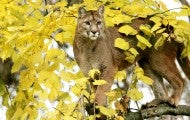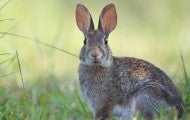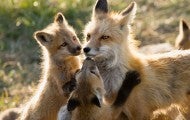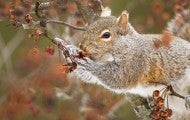Perhaps more than any other wild animal, rats have adapted to living among humans. Rats are adaptable survivors, consistently resisting increasingly dangerous and cruel attempts to exterminate them, from progressively stronger poisons (which can cause collateral damage to other wildlife) to a wide...
Opossums get a bum rap. Often seen as pests and accused of everything from knocking over garbage cans to killing chickens, these quiet marsupials are rarely a threat and easily sent on their way. Learn More About Opossums Contents What are common problems and solutions with opossums? How can I keep...
If you spot a coyote in your neighborhood, relax: Most coyotes avoid people. “Seeing a coyote out during the day is not a cause for alarm, especially in the spring and summer when they’re out looking for food for their pups,” says Lynsey White, HSUS director of humane wildlife conflict resolution...
Beavers are making a comeback. Nearly driven to extinction by the fur trade, nature’s best architects are now 6–12 million strong in the United States. This return will provide significant benefits to our country’s ecology, which has lost much of its wetlands to development and agriculture. Learn...
Once robust, populations of cougars (also known as mountain lions or pumas) have declined drastically across most of their range in the Americas. The population decline is due to the impact of extensive hunting and predator control, in addition to continued habitat loss and fragmentation. Cougars...
There are several species of wild rabbits—most are Eastern cottontail rabbits—who live across most of North America. Cottontails like to live at the edges of open areas. In fact, they are rarely found in dense forests or open grassland. Learn More About Rabbits Contents Why are there so many rabbits...
Foxes are omnivores, hunting very small animals and scavenging in cities and towns where freely available pet food and garbage can make life easier. It’s not unusual for a fox to be seen out and about during the day. Learn More About Foxes Foxes are afraid of people and will usually run away when...
There are more than 200 squirrel species, but you’ve most likely only seen the most common in North America: Grey and black squirrels. Squirrels are fascinating to watch, photograph and study, and unlike most wildlife, they aren’t shy! But their adaptable nature means they’re adept at finding the...

